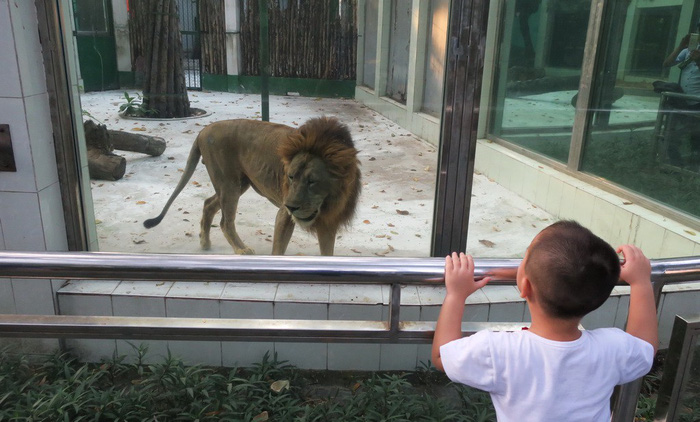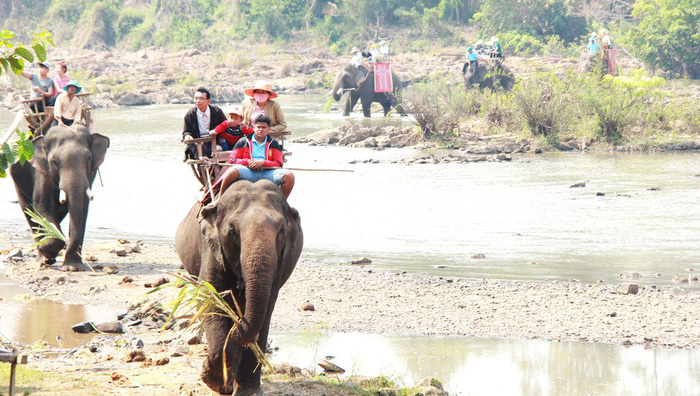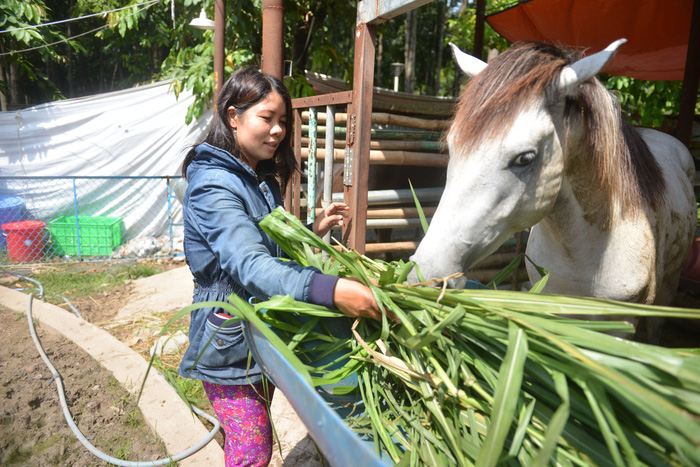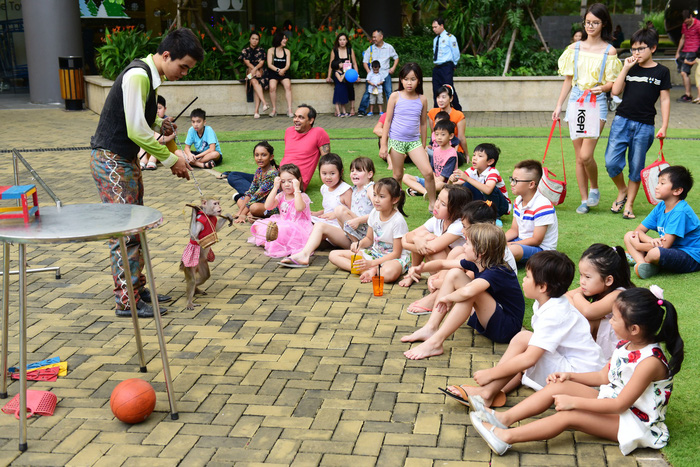The living conditions of wild animals being kept for recreational purposes, such as circus performances, are on the radar screen following a call-to-action from the Asia for Animal Coalition (AfA).
In a letter recently sent to Vietnamese Minister of Culture, Sports and Tourism Nguyen Ngoc Thien, the AfA expressed grave concerns about the abuse of wild animals for recreational purposes and requested such activities be prohibited in the Southeast Asian country.
Following the publication of the letter, Tuoi Tre (Youth) newspaper reporters visited several of the parks and gardens that keep animals captive in order to investigate the standard of living at each facility.
Care or abuse?
On Sunday, Tuoi Tre reporters visited the Saigon Zoo and Botanical Gardens in District 1, Ho Chi Minh City, where most of the animals are kept in housing separated by species.
According to a zookeeper, each animal at the facility is well-cared for by a team of experienced animal attendants.
“The animals here often grow very fast, are in good health, and are friendly to humans," the custodian said while discussing the animals’ nutrition regimen.
Pham Van Tan, the zoo’s director, told Tuoi Tre that conditions at the zoo follow regulations set forth by several international animal organizations which the Saigon Zoo is a member of, such as WAZA, SEAZA, and Species 360 .
“Our healthcare program for animal collection is conducted by 12 veterinarians who have long been committed to the institution,” Tan said.
“Compared with animals in nature, the life expectancy of some species here, including elephants, hippos, and otters, is notably higher due to good living conditions,” the director claimed.
In addition, the Saigon Zoo is also gradually switching to wider animal shelters, in lieu of small cages, which are safer and more similar to the habitats each animal would experience in the wild.
 |
| A little boy watches a lion at the Saigon Zoo and Botanical Gardens in District 1, Ho Chi Minh City. Photo: Tuoi Tre |
Similarly, the Vietnam Circus Federation built a separate three-story building designed as a care facility for its wild animals as well as a practice area for circus performances.
Its director had even considered turning the venue into a ‘zoo’ at one point to welcome young visitors before their gigs.
The animal enclosures at the facility are all wide, well-organized, neat, clean, and airy. They also include an upper odor control system.
“For us, each animal is considered a ‘performer’ and is looked after by a custodian and a circus performer,” said Nguyen Van Hoan, head of animal raising of the Vietnam Circus Federation.
“The federation keeps two veterinarians on hand to care for their well-being.”
Tuoi Tre reporters also visited Phuong Nam Art Theater in Ho Chi Minh City’s District 5, where deputy director, well-known artist Phi Vu said that only dogs, monkeys, pythons, and horses are included in the theater’s circus performances.
“Raising the animals is managed by the circus performers who always care for them as if they were their own babies,” Vu said.
“I don’t think there is animal abuse taking place at our theater because creatures only listen and obey if they feel comfortable with their trainer.”
The fly in the ointment
Though some facilities are taking steps to improve conditions for their animals, Vietnam is still racing to stop those organizations that fail to follow domestic and international guidelines for the treatment of wild animals.
At Buon Don Tourism Area in the Central Highlands province of Dak Lak, elephant riding tours are still available to visitors.
Elephants at the facility typically work from dawn to dusk, carrying passengers across the local Srepok River.
 |
| Elephants carry tourists at Buon Don in the Central Highlands province of Dak Lak. Photo: Tuoi Tre |
“When night falls, the elephants are allowed to go to the forest for food, but only with a fetter tethered on their legs to keep them nearby,” an elephant keeper in Buon Don said.
“In the morning, they are brought back to work for another day.”
Elephant riding is also available in Lak District, approximately 122 kilometers southeast of Buon Don.
There, the elephants belong to local residents who participate in ‘tourism cooperatives’ which provide rides under the management of local tourism businesses.
According to Dr. Cao Thi Ly from Tay Nguyen University, elephant riding is legal in many Asian countries, including Vietnam.
“However, the fact that elephants in Vietnam’s tourism attractions have to work long hours with little time off and less food than the standard 250-300 kilograms an adult elephant needs per day proves that they are not treated well,” Ly said.
Moreover, most of the elephants used in the tourism sector have had their tail hair torn off to please visitors who believe wearing rings made from elephant tails will bring them luck and health.
Huynh Trung Luan, director of the Dak Lak Elephant Conservation Center, said that during a recent examination of 45 household elephants, doctors noticed that most of the elephants had no tail.
“In some cases, the elephant’s owner was the one who plucked their pet’s tail hair or even cut its ivory to sell to visitors,” Luan said.
However, the center’s only means of raising awareness for safer animal-keeping practices is through propaganda.
They’re helpless to stop the poor treatment because the elephants are considered by law to be private property.
 |
| Le Thi Nhung, a custodian at Gia Dinh Park’s circus in Ho Chi Minh City’s Go Vap District, feeds a horse. Photo: Tuoi Tre |
Hard to cease entertainment activities using wildlife
Circus performances involving animals such as elephants, horses, monkeys, and bears have always been a ‘feature’ of shows organized by the Vietnam Circus Federation for the past 60 years, particularly for the young audiences.
“Animal acts make up about 50 percent of each show and are an important factor in attracting our audiences,” asserted Nguyen Van Hoan, head of the federation’s animal raising.
“At present, there are some small animal circuses that do not provide good conditions for captive breeding and training methods, and instead abuse wild animals in Vietnam. Therefore, the AfA’s recent call-to-aciton is necessary,” Hoan continued.
“However, it would be unreasonable to prohibit all institutions from performing circus acts using wild animals.
“It is unfair to caretakers like us who treat every animal as a true artist.”
According to Hoan, animal performances have also been an important aspect of the circus industry and contribute to the success of many circus promotions.
On the other hand, Phi Vu expressed his concerns about the future of those who have become too attached to using animals in their shows.
“If the circus shows using animals are banned, many people who have spent a lot of time training circus animals may become unemployed."
Like us on Facebook or follow us on Twitter to get the latest news about Vietnam!


















































